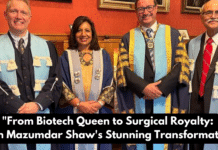TALEN outperforms CRISPR-Cas9 in compact DNA
CRISPR-Cas9 – the gene-editing tool has revolutionized biomedical research, even earning a 2020 Nobel Prize in chemistry, and may bring about many more breakthroughs in the future. However, it has its limitations.
A team of researchers from the University of Illinois, Urbana-Champaign, showed that another gene-editing technique known as TALEN is around 5 times more effective than CRISPR-Cas9 in an extremely compact form of DNA known as heterochromatin. The research paper is presented in Nature Communications.
For engineering hard-to-edit genomic areas, TALEN is much better. This could be used for both further studies and therapeutics. The genetic mutation in heterochromatin can cause diseases like sickle cell anaemia, beta-thalassemia, and Martin-Bell syndrome.
In the CRISPR, a customized, single-guide RNA brings DNA-cutting enzymes like Cas9 to target sites. Additionally, TALEN scans DNA to locate and target specific genes. Molecules called transcription activator-like effectors, or TALEs, are merged with the DNA scissors, Fok1. On TALE, the extremely variable amino acid positions referred to as repeat variable diresidues, or RVDs, serve as guides that can identify specific nucleotides for binding.
Yet scientists can’t completely comprehend how TALEs and CRISPR-Cas9 navigate the complicated atmosphere of the cell nucleus and look for their target sites in living beings.
The UIUC researchers utilized single-molecule fluorescence microscopy to examine the search characteristics of TALE and Cas9 mutant. The fluorescent molecule enabled them to determine the time CRISPR and TALEN took to reach their target sites.
On both nonspecific sites and local search, the TALE needed less time than Cas9 protein. In heterochromatin, both TALE and Cas9 showed to come across a significantly tightened search area. Yet, in at least one extremely compact heterochromatin found in chromosome 16, TALE showed substantially rapid search dynamics.
To examine the practical effects of the various search actions, the group built a series of TALENs and Cas9 guide RNAs to observe how they would edit DNA sequences in extremely repressed heterochromatin areas. In 11 out of 12 loci, TALENs observed comparable or higher editing activities contrasted to Cas9.
In few instances, TALENs were found to be over 5 times extra efficient in editing than Cas9-gRNA.
TALEN is among the numerous alternative gene-editing techniques under research. A Columbia University group utilized a “jumping gene,” or transposons, from Vibrio cholerae to include DNA sequences at targeted regions. That system does not need the double-strand break that TALEN and CRISPR-Cas9 editing usage.
The study from the UIUC study recommends numerous gene-editing tools might be required. Cas9 seemed to be much more efficient at editing in euchromatin sites. The scientists stated that Cas9’s improved local search capacity is useful in a less restrained area however counteractive in more compact areas.
The team stated that these study outcomes act as a guide in selecting gene-editing proteins for the engineering of hard-to-edit heterochromatin areas of animal cells for basic and treatment objectives.
TALEN outperforms CRISPR-Cas9 in compact DNA







it is full of knowledge, I’m so glad of downloading this app